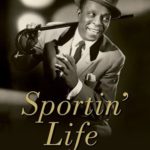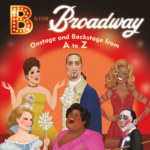 The year begins with four new notable musical theater-related books. First is Sportin’ Life (Oxford University Press), a biography of John W. Bubbles by Brian Harker. Bubbles was a groundbreaking tap dancer who inspired performers from Fred Astaire to the Nicholas Brothers. For more than 30 years, he was part of the vaudeville duo Buck and Bubbles, but his signature role was Sportin’ Life in the original Porgy and Bess. After a short film career, he made a comeback in television and concert work, playing comic foil to stars like Bob Hope, Judy Garland, Lucille Ball, and Barbra Streisand. This compelling book tells his dramatic story for the first time.
The year begins with four new notable musical theater-related books. First is Sportin’ Life (Oxford University Press), a biography of John W. Bubbles by Brian Harker. Bubbles was a groundbreaking tap dancer who inspired performers from Fred Astaire to the Nicholas Brothers. For more than 30 years, he was part of the vaudeville duo Buck and Bubbles, but his signature role was Sportin’ Life in the original Porgy and Bess. After a short film career, he made a comeback in television and concert work, playing comic foil to stars like Bob Hope, Judy Garland, Lucille Ball, and Barbra Streisand. This compelling book tells his dramatic story for the first time.
 Second is The Phantom of the Opera (Titan Comics), a graphic novel by writer Cavan Scott and artist José María Beroy. Based on the original libretto of the long-running musical, this authorized adaptation vividly illustrates the story set in 1881 Paris, as the cast and crew of a new production of Hannibal are terrorized by the mysterious Phantom of the Opera, a hideously disfigured man who lives beneath the Opera House. Hopelessly in love and obsessed with Christine Daaé, one of the opera’s chorus singers, the Phantom will stop at nothing to make her the star of the show … even if that means murder.
Second is The Phantom of the Opera (Titan Comics), a graphic novel by writer Cavan Scott and artist José María Beroy. Based on the original libretto of the long-running musical, this authorized adaptation vividly illustrates the story set in 1881 Paris, as the cast and crew of a new production of Hannibal are terrorized by the mysterious Phantom of the Opera, a hideously disfigured man who lives beneath the Opera House. Hopelessly in love and obsessed with Christine Daaé, one of the opera’s chorus singers, the Phantom will stop at nothing to make her the star of the show … even if that means murder.
 Third is B Is for Broadway (Doubleday Books for Young Readers), a picture book by writer John Roberty Alltman and artist Peter Emmerich. This sequel to A Is for Audra may be intended for ages 3 through 7, but it’s easily enjoyed by theater fans of all ages. From “Auditions” to “Ziegfeld,” this rhythmic alphabet book explores Broadway’s songs and shows, as well as its onstage talent and backstage artists, from Lin-Manuel Miranda to Patti LuPone, Michael Bennett to Jennifer Holliday, Ethel Merman to Billy Porter. It’s a colorful celebration of the American stage, and a portion of the proceeds will be donated to The Actors Fund.
Third is B Is for Broadway (Doubleday Books for Young Readers), a picture book by writer John Roberty Alltman and artist Peter Emmerich. This sequel to A Is for Audra may be intended for ages 3 through 7, but it’s easily enjoyed by theater fans of all ages. From “Auditions” to “Ziegfeld,” this rhythmic alphabet book explores Broadway’s songs and shows, as well as its onstage talent and backstage artists, from Lin-Manuel Miranda to Patti LuPone, Michael Bennett to Jennifer Holliday, Ethel Merman to Billy Porter. It’s a colorful celebration of the American stage, and a portion of the proceeds will be donated to The Actors Fund.
 Fourth is Sondheim in Our Time and His (Oxford University Press), a wide-ranging collection edited by W. Anthony Sheppard that offers new perspectives on the landmark works and career of Stephen Sondheim. Each contributor explores an aspect of biography, collaboration, or context that has affected the creation and reception of Sondheim’s musicals. In addition, several authors explore how the shows themselves have been revised and adapted over the years, while others focus on individual musicals and specific topics throughout Sondheim’s career. This volume offers some intriguing thoughts about Sondheim’s work in his day and in ours.
Fourth is Sondheim in Our Time and His (Oxford University Press), a wide-ranging collection edited by W. Anthony Sheppard that offers new perspectives on the landmark works and career of Stephen Sondheim. Each contributor explores an aspect of biography, collaboration, or context that has affected the creation and reception of Sondheim’s musicals. In addition, several authors explore how the shows themselves have been revised and adapted over the years, while others focus on individual musicals and specific topics throughout Sondheim’s career. This volume offers some intriguing thoughts about Sondheim’s work in his day and in ours.
